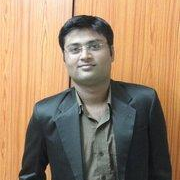International Journal of Image, Graphics and Signal Processing (IJIGSP)
IJIGSP Vol. 4, No. 10, 28 Sep. 2012
Cover page and Table of Contents: PDF (size: 323KB)
Integrating Occlusion and Illumination Modeling for Object Tracking Using Image Annotation
Full Text (PDF, 323KB), PP.40-47
Views: 0 Downloads: 0
Author(s)
Index Terms
Image Annotation, Object Tracking, Depth, Occlusion, Contour
Abstract
Tracking occluded objects at different depths has become as extremely important component of study for any video sequence having wide applications in object tracking, scene recognition, coding, editing the videos and mosaicking. This paper experiments with the capabilities of image annotation contour based tracking for occluded object. Image annotation is applied on 3 similar normal video sequences varying in depth. In the experiment, one bike occludes the other at a depth of 60 cm, 80 cm and 100 cm respectively. The effect on tracking is also analyzed with illumination variations using 3 different light sources in video sequences having objects occluding one another at same depth. The paper finally studies the ability of annotation to track the occluded object based on pyramids with variation in depth further establishing a threshold at which the ability of the system to track the occluded object fails. The contour of both the individual objects can’t be tracked due to the distortion caused by overlapping of the object pyramids. The thresholds established can be used as a bench mark to estimate the capability of different softwares. The paper further computes the frame by frame error incurred by the system, supported by detailed simulations. This system can be effectively used to achieve flawless tracking as the error in motion tracking can be corrected. This can be of great interest to computer scientists while designing surveillance systems etc.
Cite This Paper
Amarjot Singh,Devinder Kumar,"Integrating Occlusion and Illumination Modeling for Object Tracking Using Image Annotation", IJIGSP, vol.4, no.10, pp.40-47, 2012. DOI: 10.5815/ijigsp.2012.10.06
Reference
[1]Ce Liu ,William T. Freeman, Edward H. Adelson and Yair Weiss : ‘Human-Assisted Motion Annotation’ Computer Vision and Pattern Recognition, 2008.
[2]J.T.long, N.Jannetto, S.Bakker, S.Smith and G.F. Harris, ‘Biomedical of cranial dynamics during daily living artivities’. Proc: 26th IEEE EMBS Sept 2004.
[3]George M. Siouris, Guanrong Chen and Jianrong Weng: ‘Tracking of Incoming ballistic missile using an extended Interval kalman filter’. Trans on Aerospace abd Electronic System, Jan 1997 vol.33 No.1
[4]Alberto Tomita, Tomio Echigo, Masato Kurokawa, Hisahi Miyamori, Shun-ichi Iisaku: ‘A visual tracking system for sports video annotation in unconstrained environments’. Proc. International conference on image processing, 2000.
[5]Ting Chen, Member, Xiaoxu Wang, Sohae Chung, Dimitris Metaxas, and Leon Axel ‘Automated 3D Motion Tracking Using Gabor Filter Bank, Robust Point Matching,and Deformable Models’. IEEE Trans. on Medical Imaging, Jan 2010. vol. 29.
[6]B. Lucas and T. Kanade: ‘An iterative image registration technique with an application to stereo vision’, In Proc. Of the Intl Joint Conf. on Artificial Intelligence, 1981, pp (s) 674–679.
[7]M. J. Black and P. Anandan: ‘The robust estimation of multiple motions:parametric and piecewise-smooth flow fields’, Computer Vision and Image Understanding, January 1996, 63(1): pp(s)75-104.
[8]T. Brox, A. Bruhn, N. Papenberg and J. Weickert: ‘High accuracy optical flow estimation based on a theoryfor wrapping’, In Proc. ECCV, 2004, pp(s) 25–36,
[9]A.Bruhn, J Weickert, and C. Schnorr: ‘Lucas/Kanade meets Horn/schunk: combining local and global optical flow methods’, IJCV, 2005, vol. 61(3): pp(s): 211–231.
[10]M. Isard and A. Blake: ‘Condensation – conditional density propagation for visual tracking’. IJCV, 1998, vol. 29(1): pp(s) 5–28.
[11]L. Alvarez, R. Deriche, T. Papadopoulo, and J. S´anchez: ‘Symmetrical dense optical flow estimation with occlusions detection’, In Proc ECCV, pp(s) 721–735, 2002.

